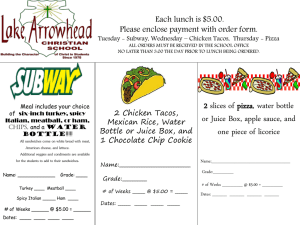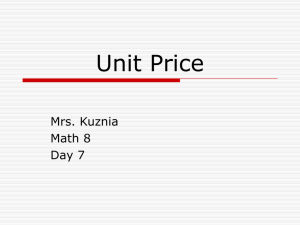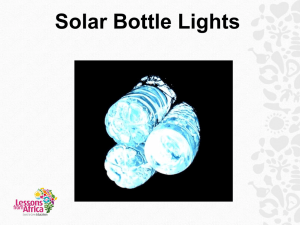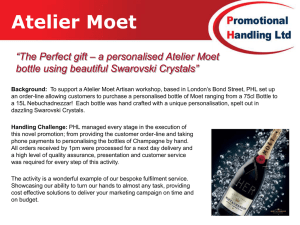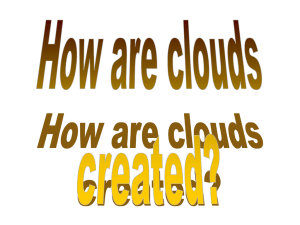There`s a Hole in my Bottle Experiment
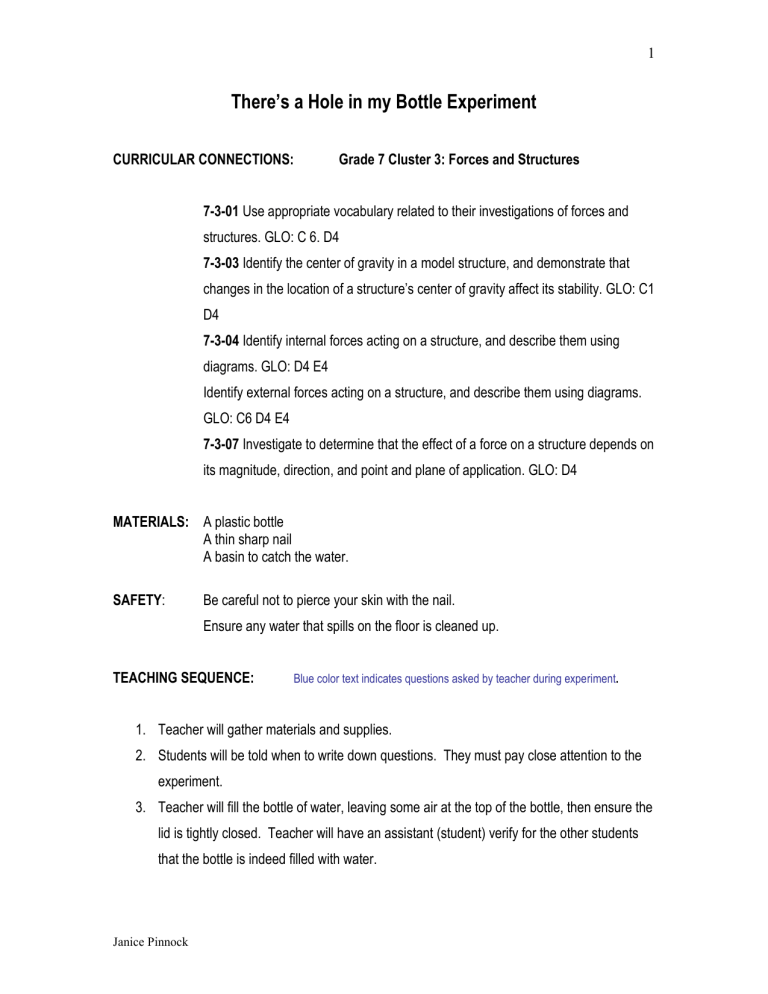
1
There’s a Hole in my Bottle Experiment
CURRICULAR CONNECTIONS: Grade 7 Cluster 3: Forces and Structures
7-3-01 Use appropriate vocabulary related to their investigations of forces and structures. GLO: C 6. D4
7-3-03 Identify the center of gravity in a model structure, and demonstrate that changes in the location of a structure’s center of gravity affect its stability. GLO: C1
D4
7-3-04 Identify internal forces acting on a structure, and describe them using diagrams. GLO: D4 E4
Identify external forces acting on a structure, and describe them using diagrams.
GLO: C6 D4 E4
7-3-07 Investigate to determine that the effect of a force on a structure depends on its magnitude, direction, and point and plane of application. GLO: D4
MATERIALS: A plastic bottle
A thin sharp nail
A basin to catch the water.
SAFETY: Be careful not to pierce your skin with the nail.
Ensure any water that spills on the floor is cleaned up.
TEACHING SEQUENCE: Blue color text indicates questions asked by teacher during experiment .
1.
Teacher will gather materials and supplies.
2.
Students will be told when to write down questions. They must pay close attention to the experiment.
3.
Teacher will fill the bottle of water, leaving some air at the top of the bottle, then ensure the lid is tightly closed. Teacher will have an assistant (student) verify for the other students that the bottle is indeed filled with water.
Janice Pinnock
2
4.
The teacher will show the nail to the students and ask what they think will happen to the water in the bottle when the bottle is pierced. They should have a discussion group at their table to compare ideas. The teacher will then ask for some of these ideas generated in the groups.
5.
Teacher will then turn the bottle upright, and pierce the bottle in a few places with the nail.
A little water may escape at first, however it will stop leaking.
6.
The bottle should still be filled with water, but when held at the neck of the bottle (not squeezing the bottle) no water will pour into the bucket.
7.
The teacher will ask the students to write down on a piece of paper why they think no water pours out of the bottle even though a hole has been punctured in the bottle.
8.
Then the teacher will ask what the students think will happen if the bottle is squeezed .
They should discuss this in small groups and ideas shared with the class.
9.
Teacher will then squeeze the bottle. Water will come pouring out. This ensures that students believe that the bottle was really pierced.
10.
Teacher will then ask how they might get the water out of the bottle much faster without turning it upside down, and pouring through the neck . They will record their answers.
11.
Teacher will then open the lid on the bottle, while holding the bottle over the basin. Water will come rushing out of the bottle much faster than before.
12.
The teacher will ask the students now to record why they think the water came rushing out of the bottle when the lid was open.
DISCUSSION: The principle behind this experiment relates to air pressure, and gravity. Gravity pushes downward on the bottle, and the water in the bottle whether the lid is on or not.
However, air pressure cannot act on the water until it somehow gets into the bottle. When the lid is on, air pressure cannot act on the surface of the water. It does however push on the outside of the bottle from all sides. Because the outside atmospheric pressure is greater than the force of gravity, then almost all the water will stay in the bottle. When the bottle is squeezed however, there is a decrease in the amount of air that is already in the bottle, so some of the water will escape from the holes made by the nails. When the lid is uncapped the outside atmospheric pressure and the force of gravity pushes down on the water at the same time, meaning the water will rush out of the holes steadily.
Janice Pinnock
3
CONCLUDING QUESTIONS:
1.
(Memory) What were the two main forces that acted on the bottle and on the water in the bottle?
2.
(Interpretation) In your own words describe what happened during the experiment.
3.
(Analysis) Connect this experiment to something you have observed that demonstrates similar air pressure and gravity principles. Eg. Coffee percolators.
4.
(Synthesis) What do you think might happen if you were to change some of the variables?
I.e. Temperature of the water, and the air outside of the bottle etc. Suggest three different variables, and suggest a possible hypothesis.
5.
(Evaluation) Test these three variables and summarize your findings.
REFERENCE: This event has its origin in Steve Spangler’s science experiments videos, also available online at: stevespanglerscience.com
Janice Pinnock


